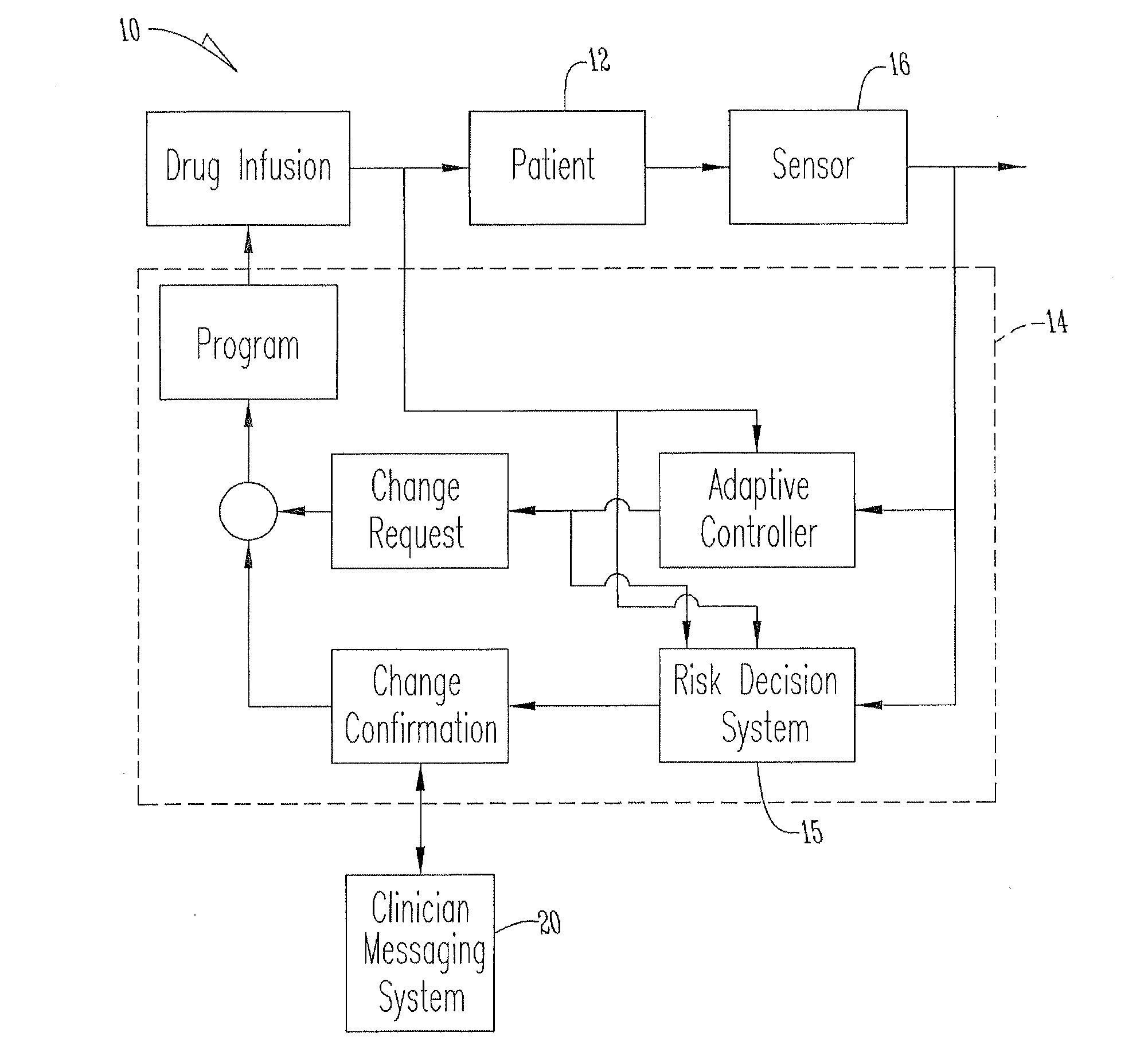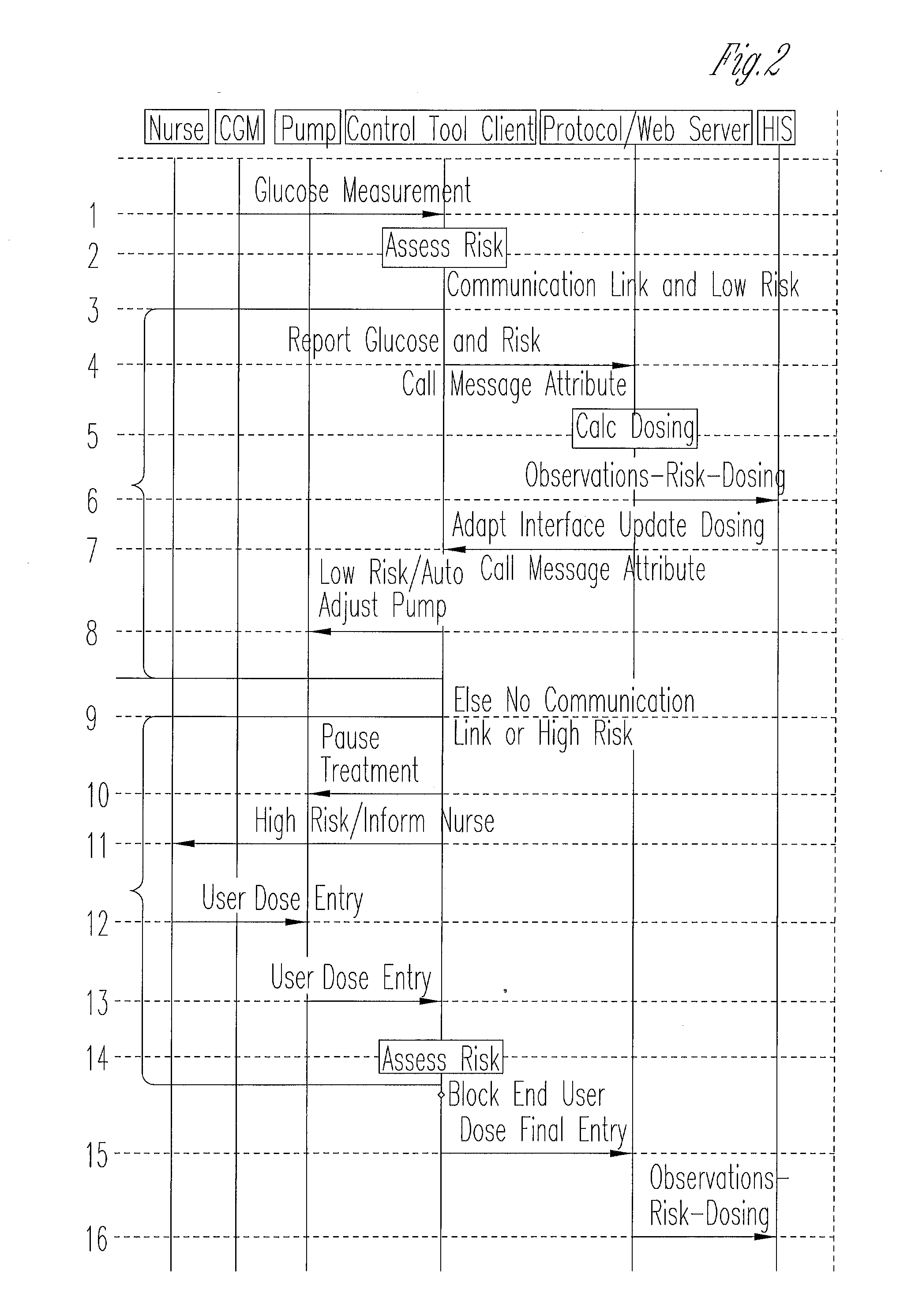System for monitoring and delivering medication to a patient and method of using the same to minimize the risks associated with automated therapy
a technology applied in the field of system for monitoring and delivering medication to a patient, can solve the problems of inability of the patient to adjust the insulin delivery, inability to monitor the patient's glucose level, and inability to control the glucose level of the patient, so as to minimize the risk of the patien
- Summary
- Abstract
- Description
- Claims
- Application Information
AI Technical Summary
Benefits of technology
Problems solved by technology
Method used
Image
Examples
Embodiment Construction
[0023]FIG. 1 provides a system 10 for monitoring and delivering medication, such as insulin, to a patient 12. The system 10 includes a controller 14 that utilizes a control algorithm and an automation risk monitor 15 all presented in a closed loop. A sensor 16 is in communication with the controller 14 and monitors a medical condition of the patient 12. A rule based application 18 (see FIG. 4 for example) in the automation risk monitor of the controller 14 receives data from the sensor 16 and compares the data to predetermined medical information to determine the risk to the patient 12 to automate the delivery of medication.
[0024]The rule based application 18 can be set to assess the therapy being administered and its criticality. Further, the rule based application 18 can assess currently administered drugs and patient 12 characteristics such as food intake, fluid intake, and disease state. Patient physiological response variables such as vitals, labs, and cognitive assessments can...
PUM
 Login to View More
Login to View More Abstract
Description
Claims
Application Information
 Login to View More
Login to View More - R&D
- Intellectual Property
- Life Sciences
- Materials
- Tech Scout
- Unparalleled Data Quality
- Higher Quality Content
- 60% Fewer Hallucinations
Browse by: Latest US Patents, China's latest patents, Technical Efficacy Thesaurus, Application Domain, Technology Topic, Popular Technical Reports.
© 2025 PatSnap. All rights reserved.Legal|Privacy policy|Modern Slavery Act Transparency Statement|Sitemap|About US| Contact US: help@patsnap.com



